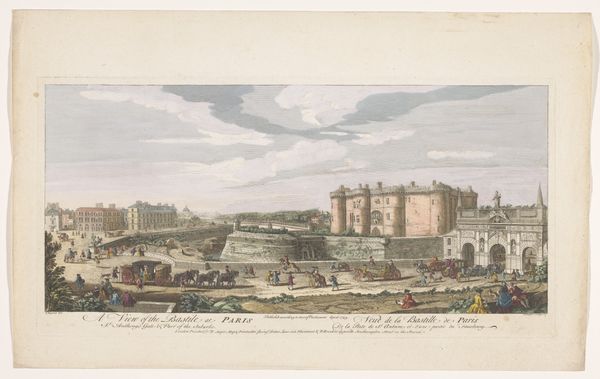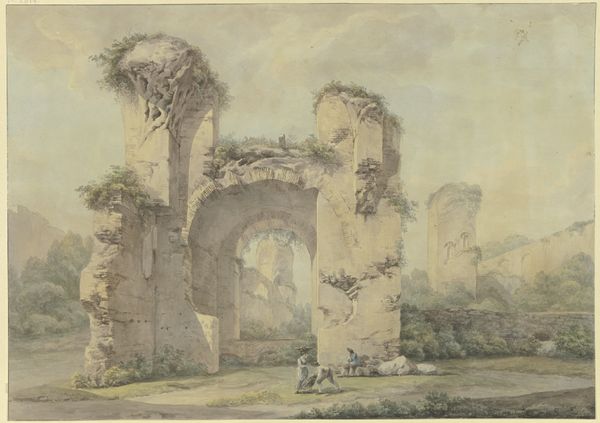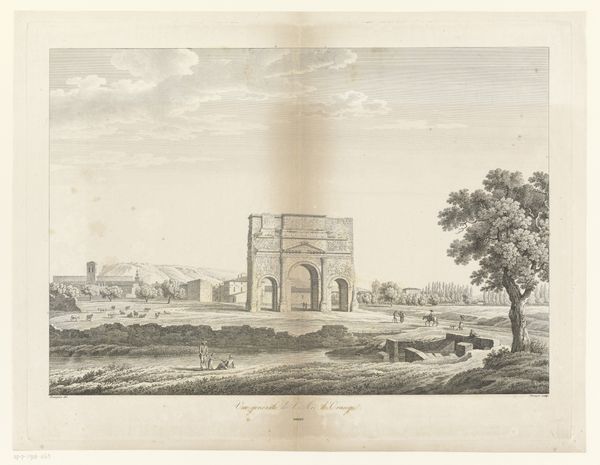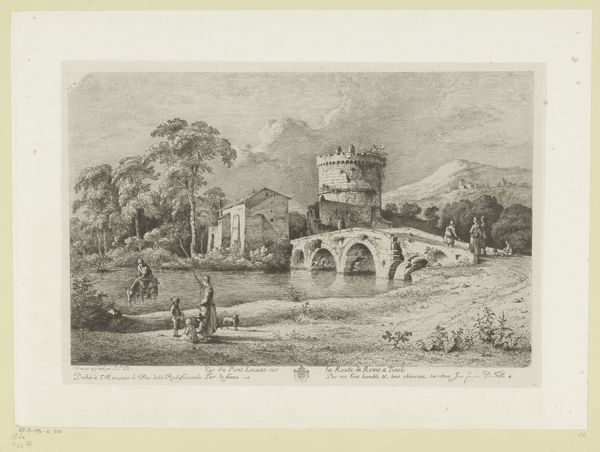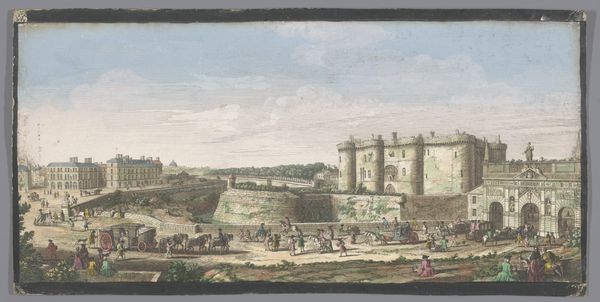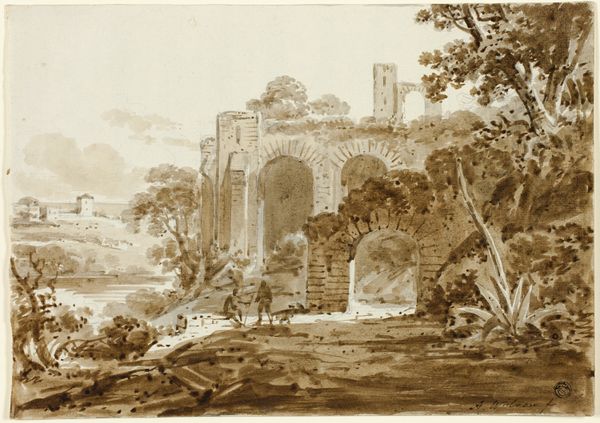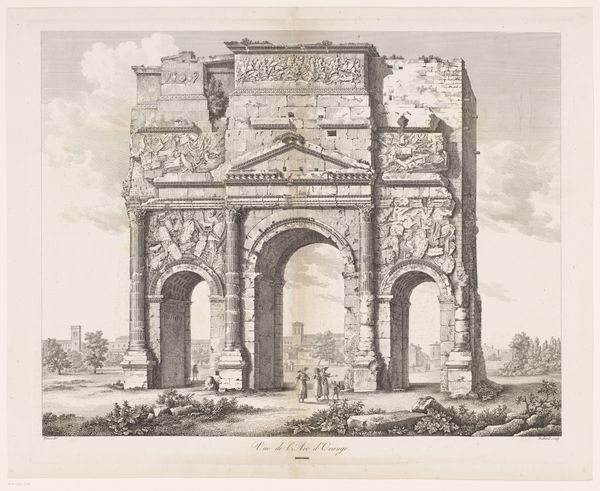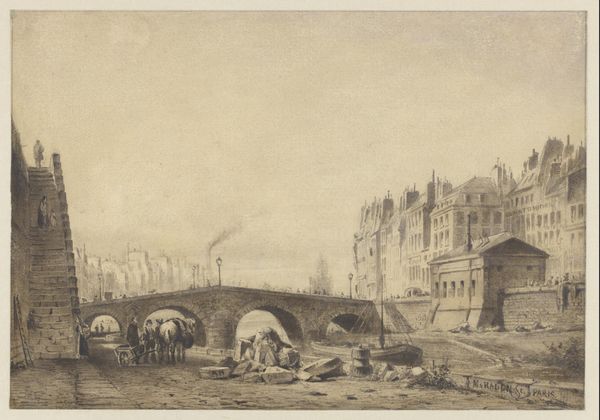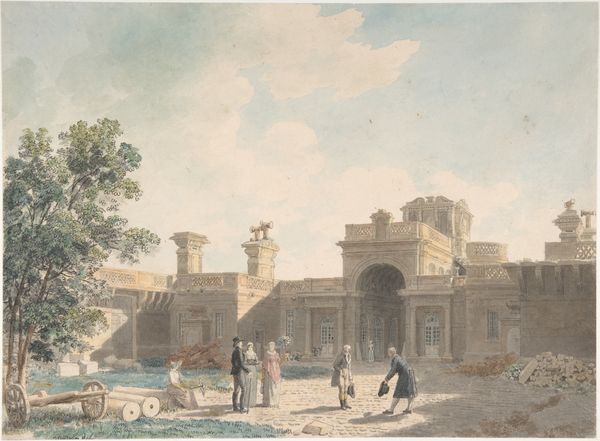
watercolor
#
water colours
#
landscape
#
watercolor
#
coloured pencil
#
orientalism
#
islamic-art
#
realism
Dimensions: Painting: H.13 in. (33 cm) W. 19 1/4 in. (48.9 cm) Mat (Standard size B): H. 16 in. (40.6 cm) W. 22 in. (55.9 cm)
Copyright: Public Domain
Editor: Here we have Sita Ram's "View of a Mosque and Gateway at Motijhil," dating somewhere between 1790 and 1850. It's a watercolor piece and it gives me this melancholic feeling, seeing these decaying structures alongside everyday life. What historical context do you see in this piece? Curator: That melancholic feeling is understandable. This watercolor reflects the complexities of the British East India Company's influence. Sita Ram was an Indian artist employed to document landscapes and monuments, effectively producing imagery for colonial consumption. It raises questions about the power dynamics inherent in such artistic endeavors. Editor: So, it's more than just a pretty landscape? It’s tied to the British East India Company’s power? Curator: Exactly. These depictions, commissioned by the British, helped shape perceptions of India and its resources. The ruins themselves might symbolize a past glory now under British sway, a visual assertion of their dominion. Editor: That's... troubling. It makes you wonder whose story is really being told. Is it the people that live here, or a foreigner showing their power? Curator: Precisely. This prompts us to analyze the role of art in colonial projects and consider whose perspectives are being amplified or silenced in historical narratives. Did the patrons influence the composition, angle, and subjects of the piece? It would influence our understanding, wouldn't it? Editor: Absolutely, this totally shifts my understanding. It goes beyond aesthetics and reveals how art can be a tool for social and political control. Thanks for broadening my view on it! Curator: My pleasure! It’s in understanding this role that we are best able to fully appreciate this and other works like it.
Comments
No comments
Be the first to comment and join the conversation on the ultimate creative platform.
